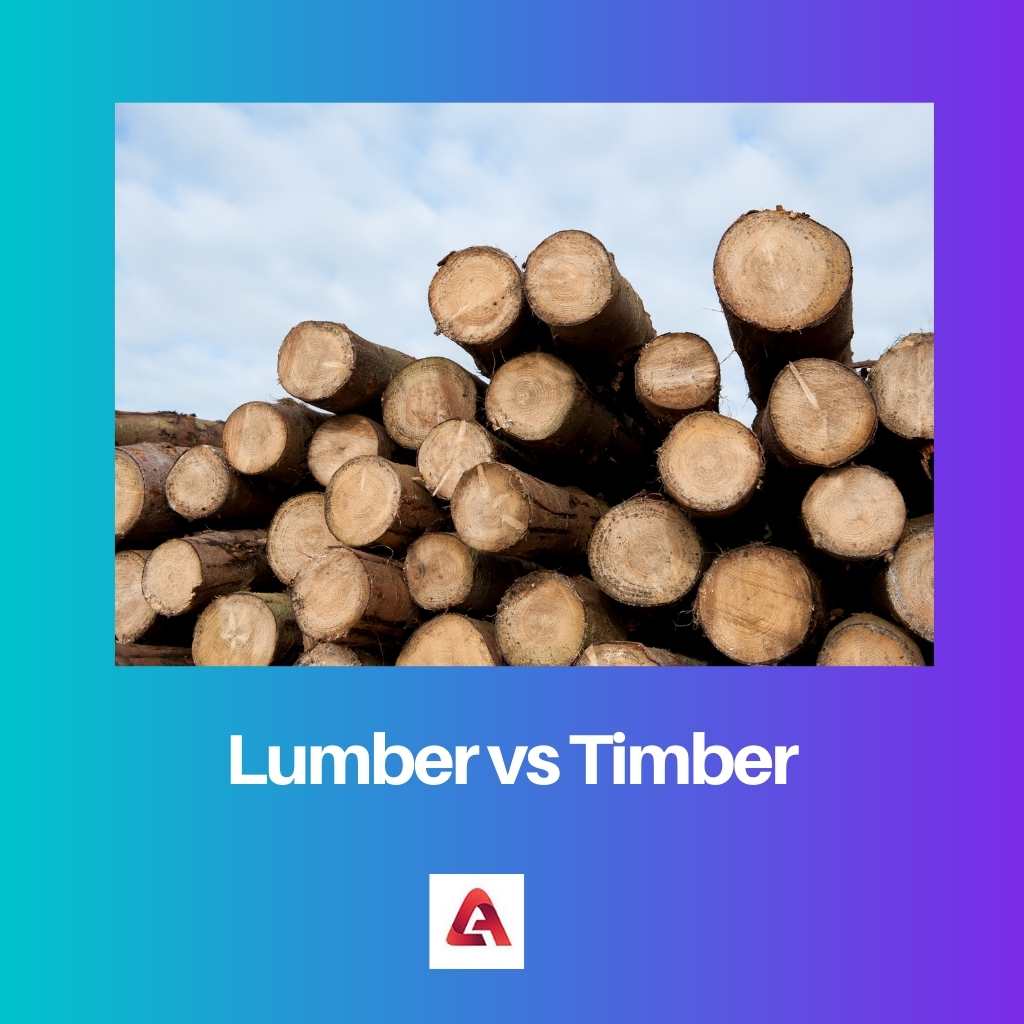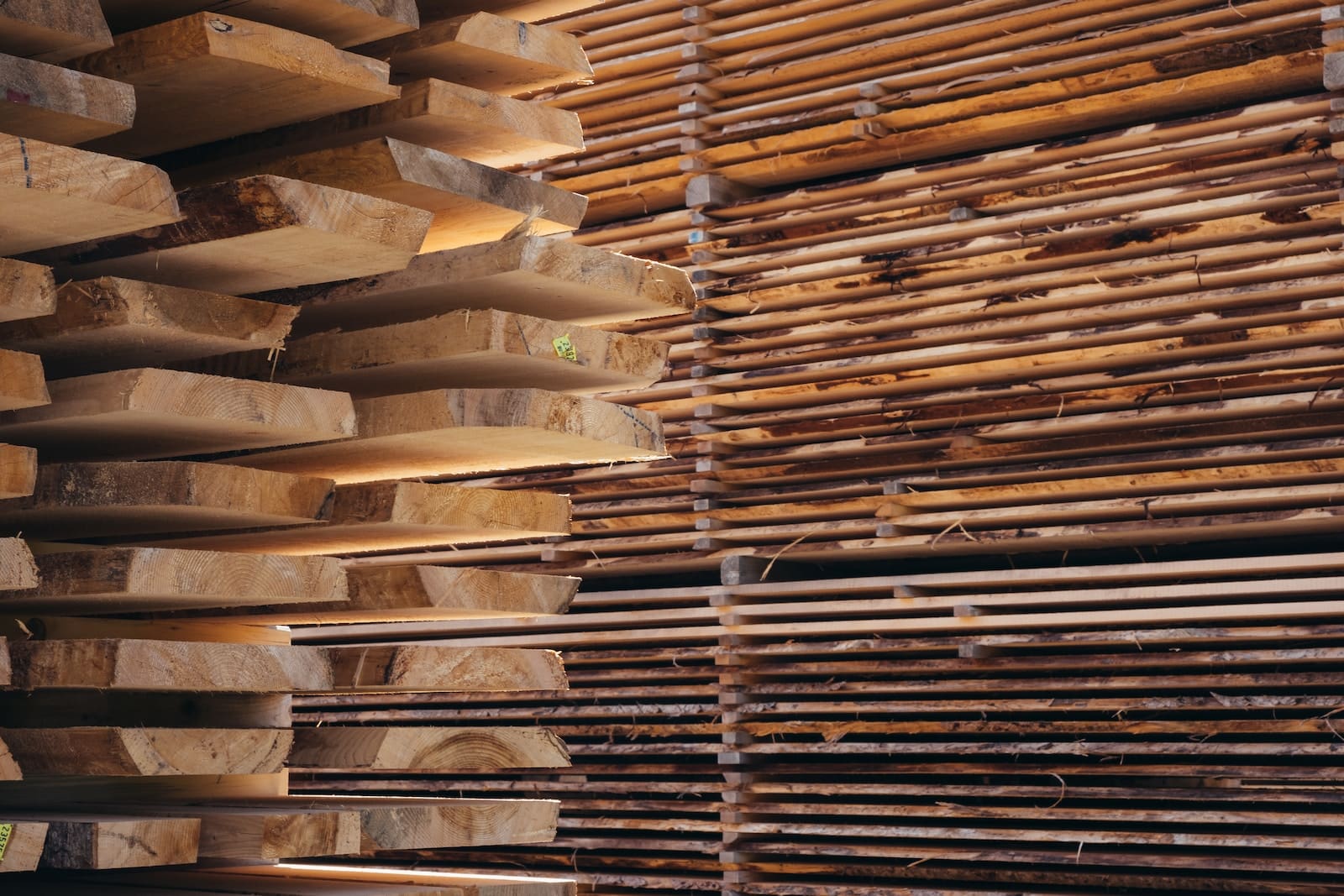The phrases lumber, as well as timber, are included when talking about wood and wood-based derivatives. However, this terminology might be confusing at times.
Since these names are frequently used interchangeably, there have been some clear distinctions in their meanings. Regional variations add another layer of complexity.
Key Takeaways
- Lumber is processed wood used for construction, while timber refers to wood in its raw, unprocessed form.
- Lumber is available in standardized sizes and shapes, whereas timber is found in its natural state and needs further processing.
- Lumber is primarily used for building and construction, while timber has various applications, including furniture making and paper production.
Lumber vs Timber
Lumber is a term used to describe processed wood that is ready for industrial use. It may be cut into standard dimensions or custom sizes for use in building projects. Timber is used to describe trees that are harvested for their wood, which may be used in construction, furniture-making, etc.

Lumber, referred to as timber, seems to be a phase in the manufacture of wood, which has been treated into joists and panels. Lumber is primarily used for construction framing, but it also has a variety of other applications.
Bumpy lumber is available, as well as lumber that has been coated on a few of its sides.
Timber is a phrase that has numerous meanings and is used interchangeably with terms lumbers throughout many parts of the globe.
Timber is a phrase that has numerous meanings and is used interchangeably with terms lumbers throughout many parts of the globe.
Comparison Table
| Parameters of Comparison | Lumber | Timber |
|---|---|---|
| Definition | Lumber refers to wood which is no longer connected towards the surface. | Timber refers to timber which is still connected to the earth. |
| Used in Regions | Lumber is the term used in the United States and Canada to describe wooden blocks. | Timber seems to be the term used in the United Kingdom as well as Australia to describe wooden planks. |
| Process of Production | Lumber is a produced wood commodity that is frequently made and produced commercially, particularly in the building industry. | Timber must first be cut as well as prepared before being sold for building. |
| Type of Bark | The bark has always been removed from this type of wood, began to prepare to be stained, mounted, or modified. | Unrefined tree stumps with bark and dirt are commonly referred to as timber. The most common sequence is tree to timber, following timber to lumber. |
| Age | Lumber is a term, which has been coined recently. | The term timber has been in use from the very start. |
What is Lumber?
Lumber is a term that refers to treated wood products that are already regularly used in residential construction and therefore are recognizable to the general public.
The word “dimensional lumber” refers to the fabrication of these goods in suitable dimensions, which makes them easier to be used in design and implementation and cuts down on framing effort.
Lumber can be roughly sawn or completed, though the latter is far more prevalent. It comes in a variety of softwoods, including pine, fir, and spruce.
It comes in a variety of softwoods, including pine, spruce, as well as birch. Designed lumber, a type of customized wood material, could be used in those situations.
Rough sawn timber is used in furnishings, and cabinetry manufacture wherein further trimming to size is required, whereas treated lumber is the mainstream technology for infrastructure projects.
The conventional toughness or accessible dimensions of lumber may be inadequate for the purpose in some cases.

What is Timber?
Timber, in one sense, alludes to hardwood that hasn’t even been gathered, that seems to be, wood which is still in the shape of an undamaged upright tree with roots firmly planted in the surface.
The transition into various solid types of wood products starts again when the trees have been chopped down and destroyed out of their root system.
A secondary meaning of the word timber is a type of wood that still has its native peeling on it.
For quality considerations, it is sometimes desirable to keep the wood as similar to its original condition as well as texture as feasible.
Timber, in one sense, alludes to hardwood that hasn’t even been gathered, that is, wood that is still in the shape of an undamaged upright tree with roots firmly planted in the surface.
The transition into various solid types of wood products starts again when the trees have been chopped down and destroyed out of their root system.

Main Differences Between Lumber and Timber
- Lumber is defined as timber that is no longer attached to the ground. Timber, on the other hand, relates to wood that is still tied to the earth.
- Wooden blocks are referred to as lumber inside the United States and Canada. Timber, on the other hand, appears to become the name used to denote wooden planks within the United Kingdom and Australia.
- Lumber is a professionally generated wood product that is commonly made and generated, especially in the construction industry. Timber, on the other hand, must now be cut and processed before becoming sold for construction.
- This kind of wood had always had the bark stripped before it was dyed, framed, or changed. Timber is normally alluded to as unprocessed tree stumps containing bark as well as dirt. Trees to timber is perhaps the most prevalent process, followed by timber to lumber.
- Lumber is a phrase that has only just been introduced. The terminology timber, on the other hand, has been used since the beginning. It normally goes through drying kinetics and seems to have a firm finish. Lumber is frequently supplied with high precision and is nearly always suitable for use in carpentry and furnishing construction.

- https://link.springer.com/article/10.1007/s001070050407
- https://link.springer.com/article/10.1007/s11367-010-0207-0
